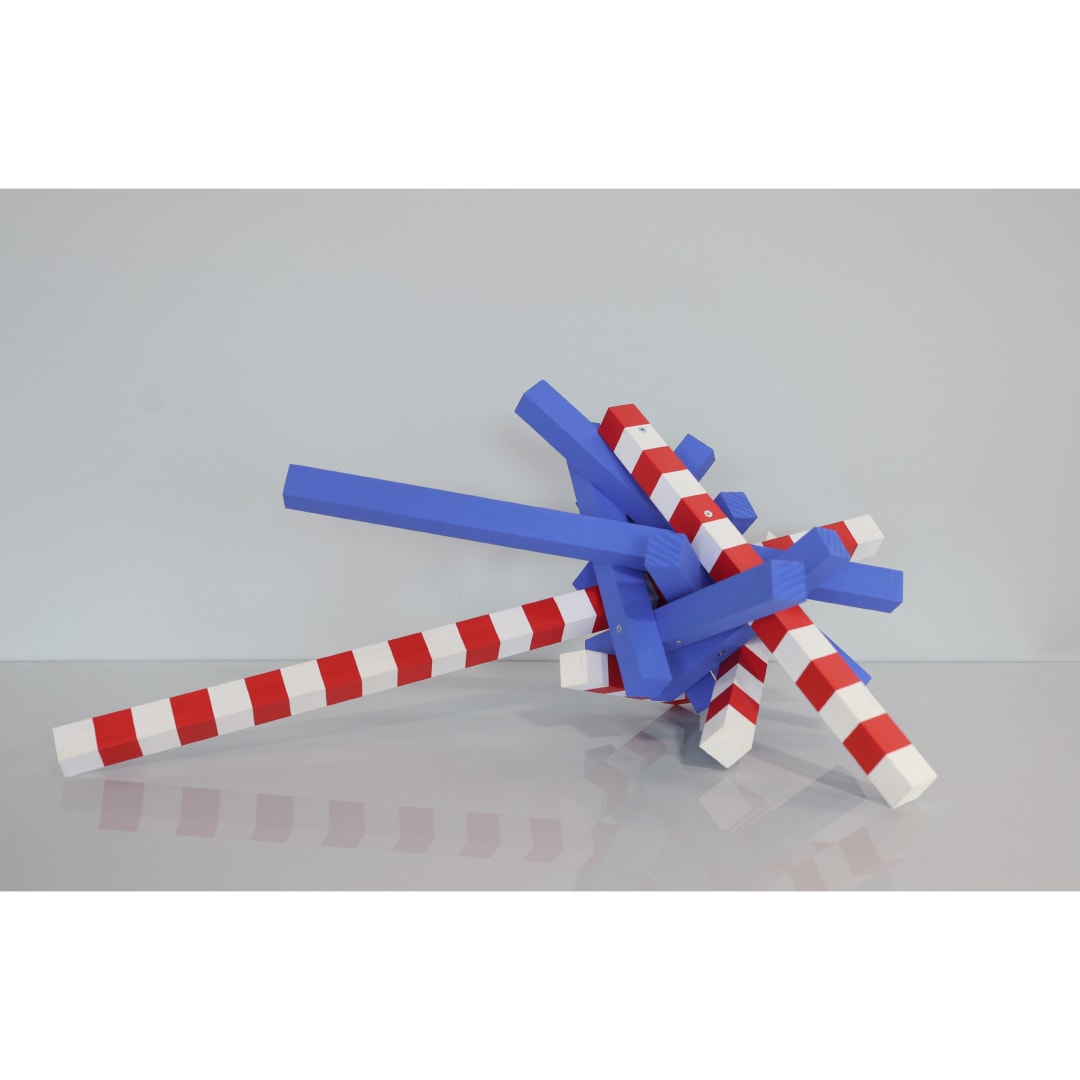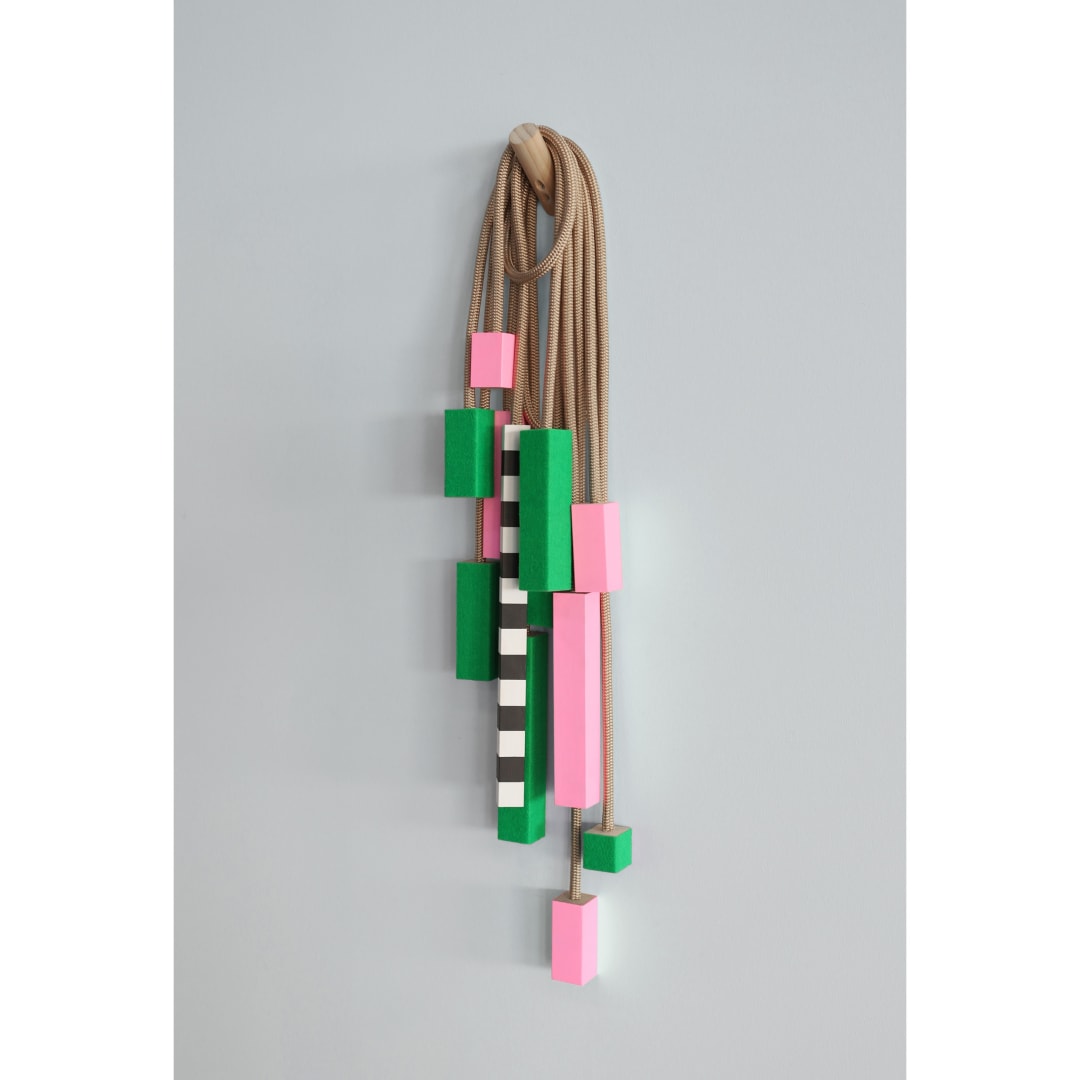Otomys is pleased to introduce Tom Borgas, the newest addition to our stable of artists. Tom's practice draws attention to the compression and degradation of the physical world caused by growing might of the digital realm. He calls upon the aesthetic and structural motifs of this domineering new power within his sculptural works in an attempt to highlight this tension between the physical and cyber world. The Otomys team sat down with Tom to discuss his inspiration and process.
OTOMYS: Can you tell us more about your ‘Vertical Compositions’? What inspired you to incorporate rope within these works?
Tom Borgas: The basic elements for these works initially appeared in drawings I was making. There’s something nice about the process of drawing that is direct, fast and physical and it often helps me develop a language for my sculpture; it enables a balance between something considered and something more gestural. The very first drawings looked at tracking the motion of the human body. I referenced videos of ballet dancers and tennis players on YouTube. However, I also spent time considering chaotic collections of wires and cords. Like a lot of my work, it grows out of a desire to interpret digital things as physical or visible.
I’ve always been interested in capturing the physical energy that’s involved in creating sculpture. One way the vertical works deal with this is by introducing soft, flexible elements. Ultimately, these works can be reconfigured into different compositions. They have an ongoing life and agency that the viewer can participate in.
OTOMYS: I understand that your practice engages with space. How do you adapt when creating works for both public spaces and domestic interiors?
Tom Borgas: My practice is very broad in terms of the platforms and contexts I work across. I think there’s a couple of reasons for that. One is that adaptability is really vital when it comes to building a career as an artist – either that or you find one thing and spend your career delving deeper in to. Personally, I love the challenge of adapting my practice and thinking across a range of contexts. The best bit is, I find the parameters of each situation are super generative. Some people would see them as limitations but all creativity requires limits to thrive.
A work that will exist indoors is more open to a variety of materials compared to a work that will remain outside in the elements. Works that are outdoors usually exists at a different scale and in response to a certain site, whereas gallery-based works are often conceived as something that is more adaptable to different contexts.
OTOMYS: Can you please explain your research into architecture, geology and philosophy. How does this research inform your practice?
Tom Borgas: The intersection of philosophy and architecture that was occurring in the late 80s and early 90s as part of Postmodernism (and more specifically Deconstruction) was a formative field of enquiry for me as a student. While the purely philosophical stuff was key in helping expand my thinking in abstract ways, architecture’s attempt to explore these ideas as physical structures and spaces was a demonstration of how these ideas can crystallise. As a result, I would say my interest in architecture mainly revolves around more speculative practices and processes.
Geology is a recurring theme in my work too. This is really to do with how easy it is to access deep time. Rocks contain a rich record of activity that’s almost incomprehensible to humans, but you can also walk outside, pick up a stone and hold that record in your hand. The earliest of tools were rocks and as we shaped them, they also reshaped us.
OTOMYS: You have developed a strong and distinct style through your use of line and colour. What drew you to sculpture and why are robs of timber and steel recurring themes within your practice?
Tom Borgas: I have a background in graphic design and these were the first ‘artists’ that inspired me. A lot of them were working either pre-digitally or at the transition from analogue to computer based design. Having lived through this change, my work also grows out of a conversation between digital and analogue processes and materials. I actually went back to study sculpture after feeling like I needed a break from using computers so much. My work still uses digital processes and apps as practical/generative tools but engaging with physical processes feels best.
A lot of the colours in my work are quite bold and flat and the forms use simple geometry that’s easy to create and manipulate virtually but they’re also forms that are readily available as actual materials– lengths of timber, steel etc. I like the challenge of creating engaging things with everyday materials and forms. Art can easily become aloof and detached from reality and so it also tends to connect things back the the world a little more too.
May 10, 2023





